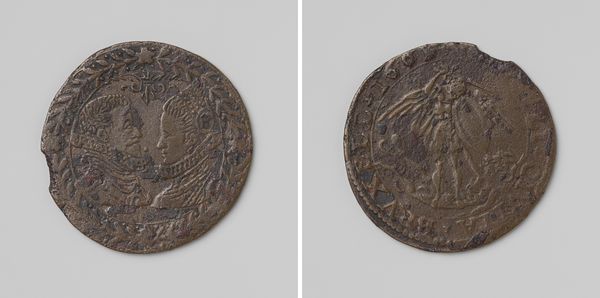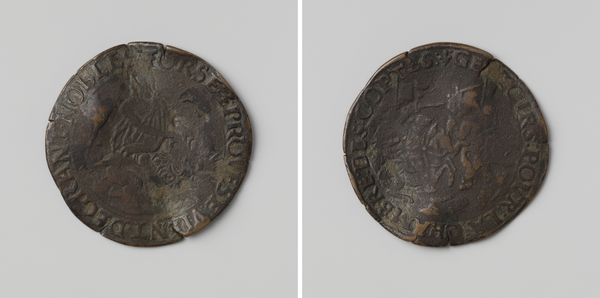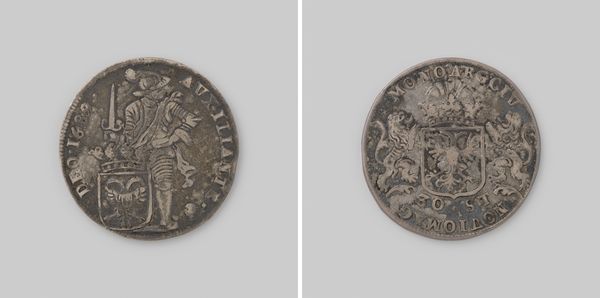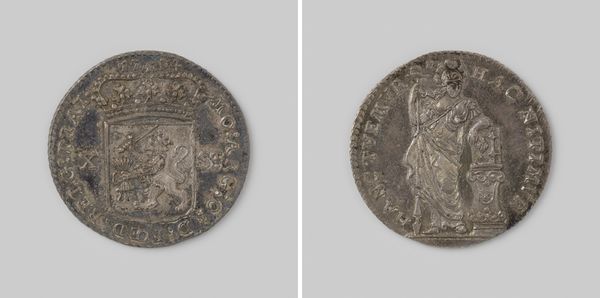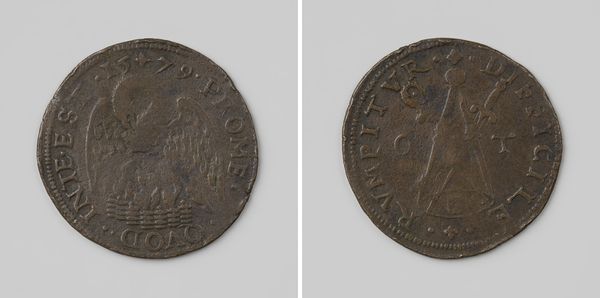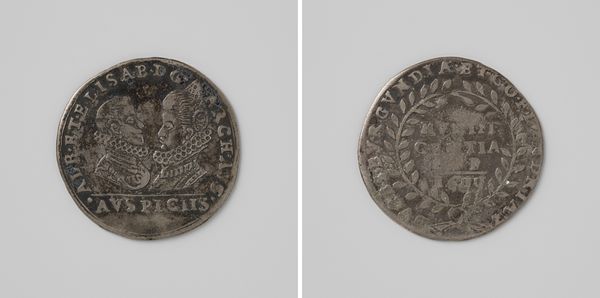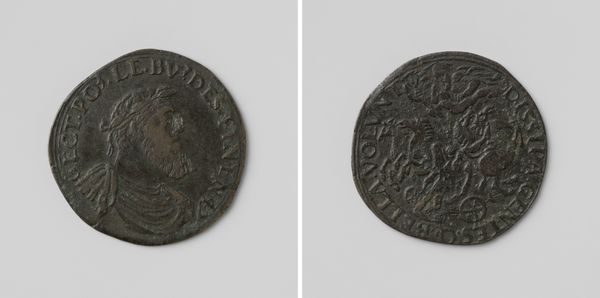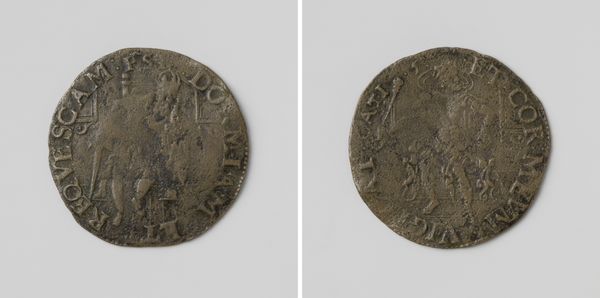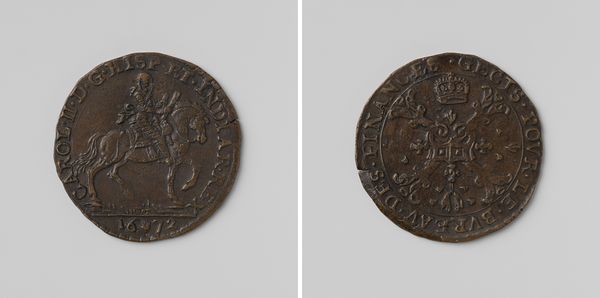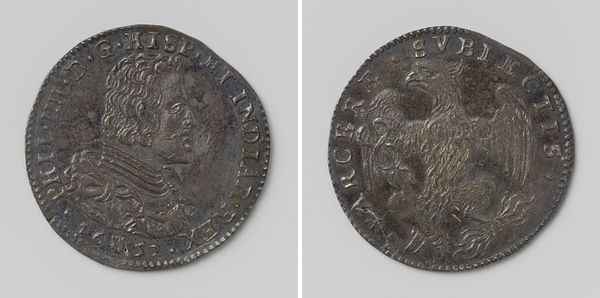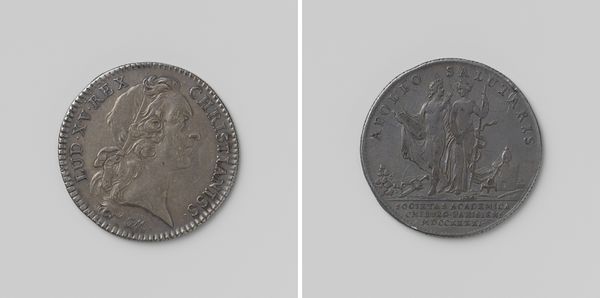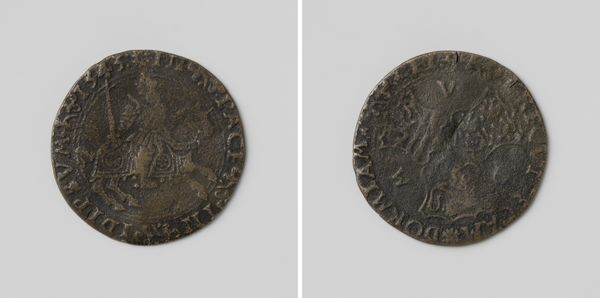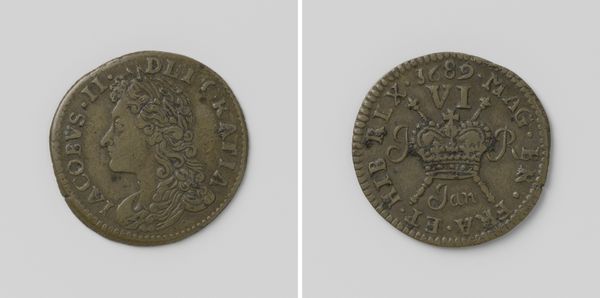
print, metal, engraving
#
portrait
#
dutch-golden-age
# print
#
metal
#
engraving
Dimensions: diameter 2.7 cm, weight 4.59 gr
Copyright: Rijks Museum: Open Domain
Editor: So, this is "Schutterij van Leiden," created in 1669 by Arent Jansz. Schmeltzing. It’s an engraving, presumably on a metal disc, maybe a coin or a medal. The images seem militaristic. What stands out to you about it? Curator: As a historian, what immediately strikes me is the socio-political context implied by "Schutterij." These civic guard groups were deeply embedded in Dutch society. These were not professional soldiers, but citizen militias, a reflection of a specific historical moment and the balance of power at play within the Dutch Republic. What does the imagery itself suggest about this context? Editor: I see weaponry—muskets, swords, armor. And on the other side, there's a lion rampant with a crown, flanked by shields with what look like anchors. Is that related to the civic guard? Curator: Absolutely. The imagery is consciously constructed. The lion is a clear symbol of Dutch identity and resistance to foreign rule. And the weaponry? These aren’t just tools, they are symbolic of civic responsibility. Each member was expected to equip themselves, so the piece highlights civic duty in maintaining public order. Do you get a sense of how this image functioned in society? Editor: Maybe it was a reward for service or a commemorative piece? Something tangible representing belonging and commitment. It really is striking that this everyday object, even small, reflects so many societal forces. Curator: Precisely. It reminds us that art is not divorced from social realities; it reflects and reinforces specific values, beliefs, and structures within society. Understanding the ‘Schutterij’ tells us a lot about Dutch history, civic engagement, and collective identity during the Golden Age. Editor: That’s really interesting, it gives new appreciation to something seemingly simple. Curator: Agreed. It encourages us to consider objects and the art market as social constructs. I've definitely learned from our little analysis.
Comments
No comments
Be the first to comment and join the conversation on the ultimate creative platform.
